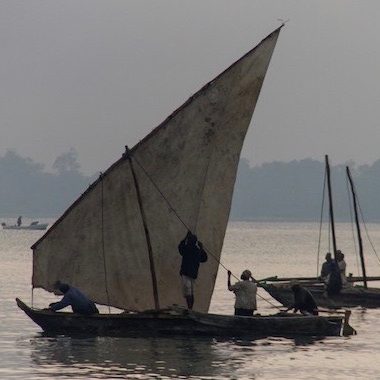Telecoupling and equity
The application of the telecoupling framework has recently exploded in the literature since its introduction in the early 2010s. It has now been applied to study material and non-materials flows ranging from traded commodities, finance, and discourses. As the framework continues to be applied, so are the challenges of using and adopting it for the various flows and contexts. For this reason, it seems like a critical moment to take stock of the key lessons learned from its application, ‘update’ the framing with recent thinking of new applications and intended potential uses, as well as develop some labs/practical guidelines on how to use it – based on existing knowledge. The framework is also predominantly used to study the spatial dimension of flows – i.e., how flows move from one ‘place’ to another, at various levels (e.g. nation – nation, subnational connections, intra local connections, etc). However, so far it has not been used to assess these connections through time. This working group will explore the conceptual scaffolding to grapple with this question.
We will focus on developing the conceptual aspects of the framework based on recent literature, as well as expanding the aspects of the framework we think are currently missing. This includes considerations of equity (and how different framings of equity could be included in the telecoupling framework), temporal dimensions, and also how impacts and feedbacks are analyzed in the framework, among others. In addition, will focus on synthesizing lessons from a range of case studies and projects currently being implemented by members of this working group. This includes exploring potential leverage points in the systems that enhance equity and sustainability. These projects are scattered around the world, and there is real benefit to synthesizing and learning across them.
Key research questions:
- What are the key emerging lessons we can learn from using and expanding the telecoupling framework and approach?
- Despite its predominantly spatial focus, how can this framework be used and expanded to explore temporal dimensions
- How can the telecoupling framework be usefully expanded to consider the equity implications of telecoupled interactions across spatial and temporal scales?
- How can a telecoupling lens be used to identify leverage points for transformations towards just, equitable and sustainable futures?
Working Group Coordinators:
- Odirilwe Selomane – Centre for Sustainability Transitions, Stellenbosch University, South Africa
- Nadia Sitas – Centre for Sustainability Transitions, Stellenbosch University, South Africa
Working Group Participants:
- Kate Pringle – Centre for Sustainability Transitions, Stellenbosch University, South Africa
- Lutendo Mugwedi – University of Venda, South Africa
- Bosco Lliso – Basque Centre for Climate Change, Spain
- Unai Pascsual – Basque Centre for Climate Change, Spain
- Lasse Loft -Leibniz Centre for Agricultural Landscape Research, Germany
- Patricia Balvanera – Instituto de Investigaciones en Ecosistemas y Sustentabilidad, Universidad Nacional Autónoma de México, Mexico
- Grace Wong – Research Institute for Humanities and Nature in Kyoto, Japan & Stockholm Resilience Centre, Sweden
- Andrea Downing – Stockholm Resilience Centre, Stockholm University, Sweden
- Maria Brockhaus – University of Helsinki, Finland
- Maike Hamann- Centre for Sustainability Transitions, South Africa
- Britta Hackenberg – Namibia Nature Foundation, Namibia
- Ole Merts – University of Copenhagen, Denmark
- Alizee Ville – University of Helsinki, Finland




